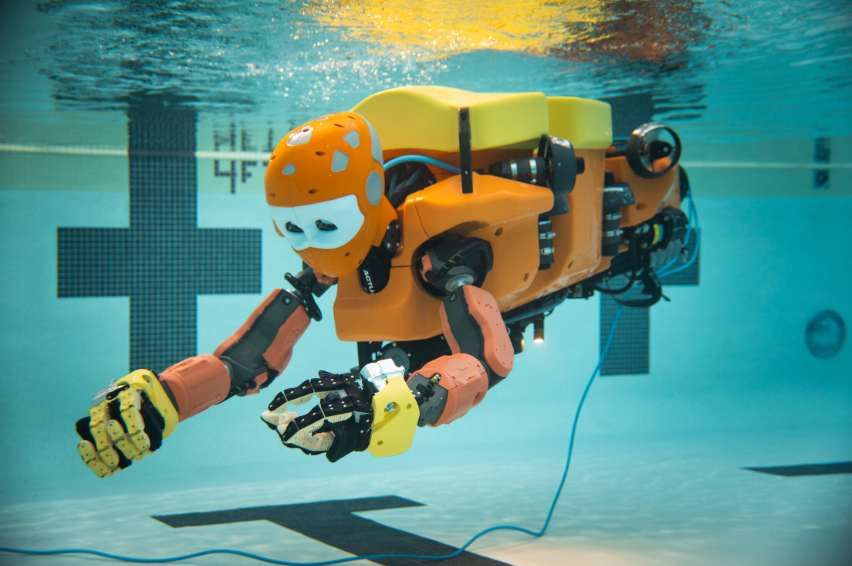Imagine plunging into eternal darkness where pressures crush submarines like tin cans—welcome to the deep ocean, Earth's final frontier. While humans have mapped Mars more thoroughly than our own seabed, a technological renaissance is changing this. Underwater Exploration Robots, powered by artificial intelligence and engineered for extremes, now descend where sunlight vanishes and pressures exceed 1,000 atmospheres. These robotic pioneers aren't just cameras on cables; they're autonomous scientists collecting climate data, discovering new species, and uncovering geological wonders while revolutionizing our relationship with the planet's least understood ecosystem. Underwater Exploration Robots include two main categories: Autonomous Underwater Vehicles (AUVs) and Remotely Operated Vehicles (ROVs). AUVs operate independently using pre-programmed missions, while ROVs remain tethered to ships for real-time human control. Unlike military submarines, these robots prioritize scientific instrumentation over weaponry, carrying hyperspectral cameras, DNA samplers, and water chemistry sensors. Their titanium bodies withstand crushing depths up to 11,000 meters—deeper than Mount Everest is tall. Without GPS signals underwater, robots use AI-driven Simultaneous Localization and Mapping (SLAM) algorithms creating 3D maps in real-time. By cross-referencing sonar pings with current flow data and terrain features, these systems autonomously avoid methane vents or biological reefs while adjusting paths to conserve energy. The Monterey Bay Aquarium Research Institute’s Benthic Rover II exemplifies this by traversing abyssal plains for months without human intervention. Every 10 meters of depth adds atmospheric pressure equivalent to Earth's surface—requiring specialized engineering. Modern Underwater Exploration Robots use syntactic foam buoyancy rated for 6,000-meter depths and pressure-compensated lithium batteries that function flawlessly in cold, high-pressure environments. The Japanese URASHIMA AUV holds the record by operating for 56 hours at 3,500 meters using fuel cell technology. Radio waves fail underwater, forcing robots to rely on acoustic modems transmitting data at speeds slower than 1980s dial-up. MIT researchers recently pioneered blue-green laser systems achieving 20 Mbps transfers across 10 meters—revolutionizing how robots share high-resolution thermal vent videos and methane plume data with surface vessels within localized areas. In 2023, an Australian AUV filmed bioluminescent species consuming plastic at 4,000 meters—evidence of deep-sea pollution no human witnessed firsthand. NASA-funded Underwater Exploration Robots also identified extremophile bacteria near hydrothermal vents, offering clues about potential extraterrestrial life on ocean moons like Europa. These discoveries underscore how robots serve as humanity's eyes in environments hostile to life. Robotic fleets mapped 85% of Arctic subsea permafrost melt between 2020-2023, data crucial for predicting methane release timelines. By integrating robotic observations with satellite models, scientists now forecast sea-level rise with 15% greater accuracy, revealing how these machines aren't just explorers but climate sentinels. Harvard’s "Robo-Ray" mimics stingray propulsion for stealthy wildlife observation, while ETH Zurich’s robotic jellyfish uses vortex thrusting to navigate reefs without damaging coral. This trend toward bio-inspired engineering enables unprecedented ecological studies. Saltwater corrosion causes 37% of subsea equipment failures. Modern Underwater Exploration Robots deploy vibration analysis algorithms detecting motor imbalances weeks before failures. Cloud-based digital twins simulate stress responses during missions, allowing engineers to modify dive plans if simulations show potential leaks at target depths. WHOI’s Orpheus AUV leverages GPU-accelerated neural networks identifying biological specimens during dives—classifying 170+ species instantly using pattern recognition trained on over 2 million images. This AI capability transforms exploration robots from data collectors into field biologists. The deepest-rated operational robot, Japan's Kaikō ROV, reached 10,927 meters in the Mariana Trench—though newer designs like Caltech's deep-drilling AUV target sustained operations beyond 11,000 meters. For deep-sea research, yes. They exceed human dive limits by surviving months in environments lethal to humans while collecting terabytes of continuous data. However, shallow-water archaeology still benefits from human-robot collaboration. Through spherical titanium pressure hulls, pressure-compensated electronics, and solid-state batteries. Some innovative models use liquid housings where the electronics are suspended in oil, matching external pressure at all depths. European researchers are testing "deep-sea power grids" enabling indefinite deployment—robots recharge from hydrothermal vents' thermal energy and methane fuel cells. NASA funds development of Europa probe prototypes harvesting ice-generated hydrogen for propulsion. By 2028, collaborative swarms of subsea drones could autonomously map entire oceanic trenches, revolutionizing geology.
Defining the Depths: What Are Underwater Exploration Robots?
AI's Role in Deep-Sea Navigation
Extreme Engineering: Conquering the Deep's Brutal Physics
Communication Breakthroughs: From Acoustic Signals to Laser Data
Ecological Discoveries Enabled by Robotic Exploration
Climate Change Insights From the Abyss
The Biomimicry Frontier: Nature-Inspired Robot Designs
Predictive Maintenance: AI Preventing Deep-Sea Failures
Deep Learning Below the Waves: Real-Time Data Interpretation
Frequently Asked Questions
How deep can Underwater Exploration Robots travel?
Can these robots replace human divers?
How do they withstand extreme water pressure?
The Future: Swarms, Energy Harvesting, and Interplanetary Applications
